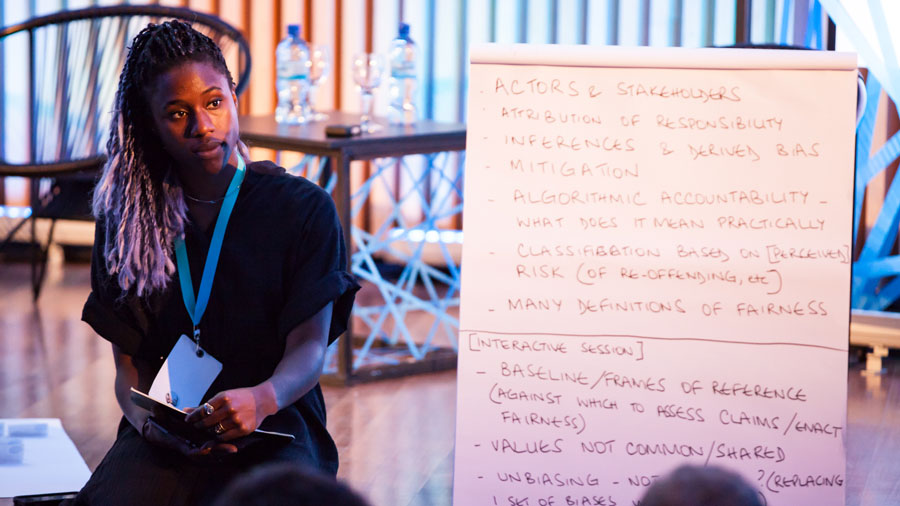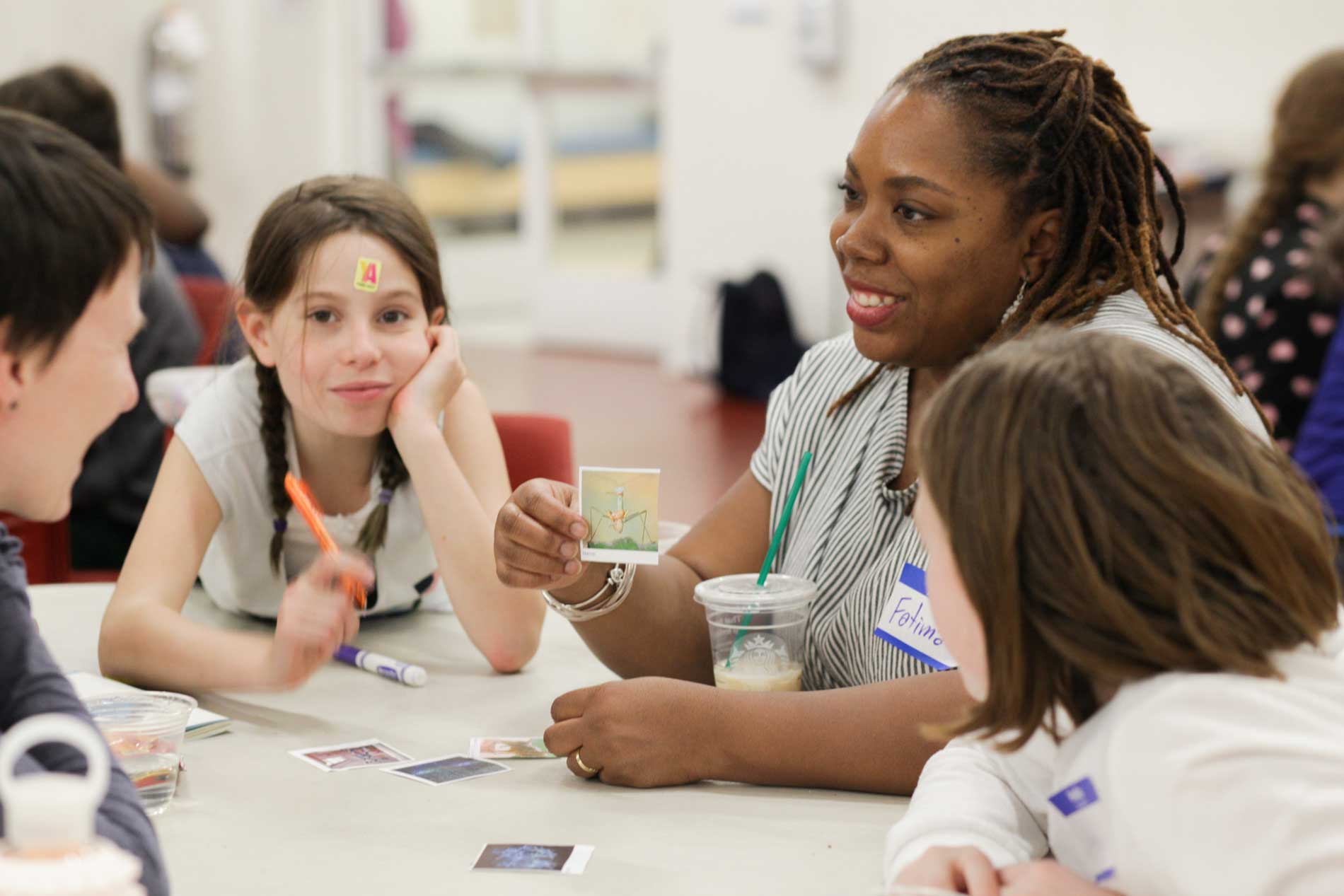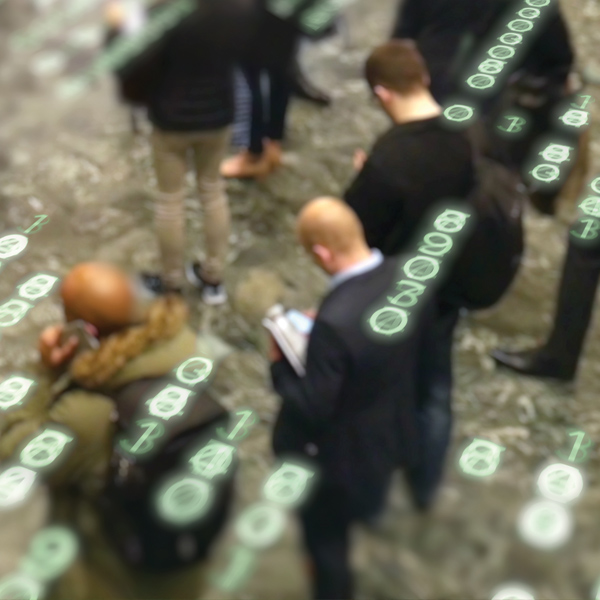A People’s Guide to Tech is demystifying—and democratizing—technology to shape a more just and equitable future.
While attending a conference about the future of artificial intelligence, community organizer Diana Nucera kept thinking about her hometown of Detroit, where close to 40 percent of homes lack access to the internet.
“How the heck am I supposed to talk to my community about artificial intelligence if we're still trying to get internet connections?” she remembered thinking.
Nucera and another attendee, Nigerian-American artist Mimi Ọnụọha, wondered what the future of the technology would be if it were in the hands of everyday people: the cashier, the postal worker, the Detroit resident shut out by “digital redlining.” To find out, Nucera and Ọnụọha wrote “A People’s Guide to AI.”
Since they self-published the booklet in 2017 and announced it with a single post on social media, around 8,000 copies have been printed, downloaded, or licensed for use. They have distributed it through bookstores, libraries, their personal networks, and workshops.
That initiative has grown into A People’s Guide to Tech, which produces books, guides, workshops, and other creative resources to help people–particularly community-based groups and movements in marginalized communities–navigate technology and participate in its creation.
“I really just want people to know what is coming so they have the agency to shape the future,” said Nucera, who practices art using the name Mother Cyborg. “That has always been the goal.”
From self-driving cars and crime prediction tools to medical diagnoses and facial recognition, artificial intelligence is running behind the scenes in many of the arenas that impact our daily lives. Because so few people understand it, discussions about AI often take on a doomsday quality.
A People’s Guide to Tech (APGT) is changing that perception by making the concepts easy to understand and empowering people to advocate for their communities and help shape the technology’s future. To do that, the organization uses popular education, a teaching approach centered around learners’ experiences. APGT honed the approach, offered in the organization’s workshops, in the 80-page “A People’s Guide to AI.”
In one example of breaking down the building blocks of AI, the booklet defines algorithms simply as a series of steps to perform a task. The process could be as basic as the personal “algorithm” for making a sandwich or cleaning the house, the booklet states.
And while offering examples of AI in common technologies such as text message autocorrect features and smart speakers, the guide encourages readers to think deeply about where AI may exist in other technologies. In one activity, People’s Guide challenges readers and workshop participants to use what they have learned to identify a problem in their life or community and sketch out an AI system that could address it.
Using that framework, Ọnụọha and Nucera intend to build an entire catalogue of widely recognized and trusted resources. Already, the AI guide and the group’s workshops have reached middle schoolers, retirees, academics, businesspeople, and library patrons.
Major art galleries, including London’s Tate Modern, also have requested copies of “A People’s Guide to AI” to hand to museum goers during art exhibits related to technology.

In its workshops and creative resources, A People's Guide to Tech uses a teaching approach centered around learners' experiences. Photo Credit: A People's Guide to Tech.
Demystifying AI
After the largest nurses’ union in the U.S. heard about “A People’s Guide to AI,” the organization integrated the material into its courses to educate members about the use of artificial intelligence and machine learning in medical diagnostic tools.
“One of the issues that's coming up in the provision of care is that nurses are not told—and oftentimes management does not even know themselves—what data exactly is being fed into the tools,” said KB Burnside-Oxendine, lead educator for National Nurses United.
The union wanted to help nurses recognize diagnostic tools’ frequent reliance on AI, understand the potential shortcomings of the technology, and advocate for patients.
“The People's Guide is really great at demystifying what AI is and how it works,” Burnside-Oxendine said. “So non-programmers–people like nurses–develop more agency and can grasp how the tools work.”
In addition to explaining AI’s potential harms, A People’s Guide to Tech aims to inspire positive change with examples of the technology used for good—designing prosthetic limbs, for instance, and searching for the graves of people who have gone missing in drug-related violence in Mexico.
“We are tired of fatalism,” Ọnụọha said. “Hopefulness is definitely our strategy.”
Nucera has seen that approach work. In a previous role, she led efforts to train Detroit residents to build their own high-speed Wi-Fi networks. People went on to start businesses, create artistic endeavors, and more, she said.
The fact that two artists lead People’s Guide helps feed that spirit of creativity and enterprise, said Ọnụọha, who completed her graduate studies in a tech, design, and arts program at New York University’s Tisch School of the Arts and taught there as adjunct professor as well.
Nucera agreed, adding that being women of color in the tech world also gives them an important lens through which to view their work.
“We like to write the things we wish we had access to,” she said.
In 2022, MacArthur provided $300,000 to support the work of A People’s Guide to Tech via its fiscal sponsor, Allied Media Projects.




